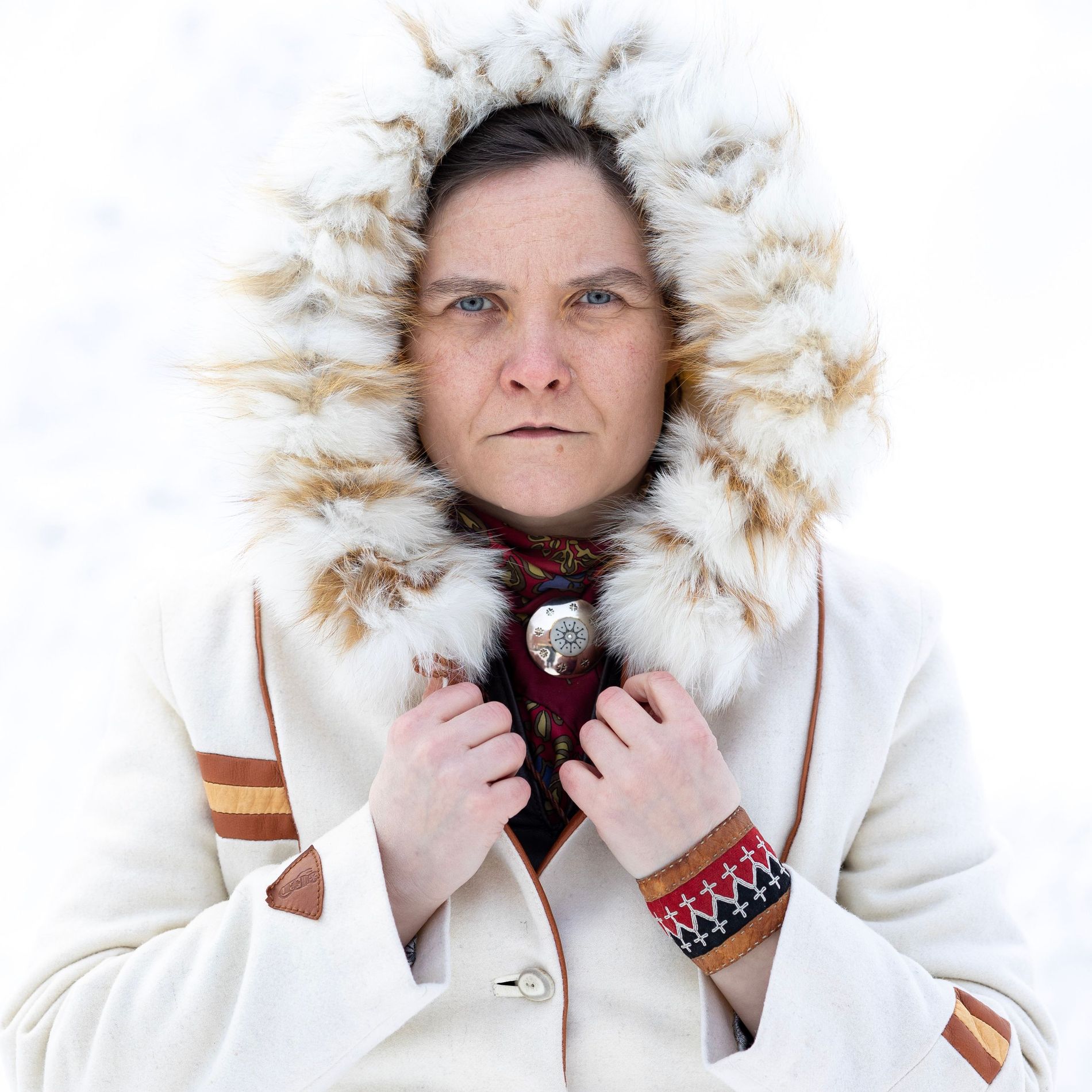Art, climate crisis, and activism: Vogue Scandinavia meets the thee Sámi artists representing the Nordic countries at one of the world's most prestigious exhibitions
The Nordic contributions to this year’s Venice Biennale will be a game-changer. Three indigenous Sámi artists hailing from the Sápmi region —which spans Norway, Finland, Sweden and the Kola Peninsula, Russia —will transform the Nordic Pavilion in the heart of the Giardini into the Sámi Pavilion. The exhibition, by artists Pauliina Feodoroff, Máret Ánne Sara, and Anders Sunna, will address the multiple problems that their generation faces – and what’s at stake if Sámi voices remain unheard.
This is not the first time a national pavilion is honouring indigenous artists. In 2019, the Inuit art collective Isuma took over the Canadian Pavilion, while Maori artist Lisa Reihana represented New Zealand. But never before has a pavilion’s name been altered to reflect the deep recognition of an indigenous people’s connection to a region that transgresses national borders. In a reconciliatory gesture to mark this historic event, Her Majesty Queen Sonja of Norway will inaugurate the Sámi Pavilion in Venice on April 21.

Máret Ánne Sara, Anders Sunna and Pauliina Feodoroff at the Venice Biennale. Photo: Marta Buso
The works on display in the iconic Sverre Fehn-designed pavilion will connect viewers with the landscapes of Sápmi, all central to the life of Sámi communities: The old-growth forest, the rivers, the vast, frozen tundra. But don’t expect quaint, idyllic artworks. Decades-long violations of land rights, extractive practices like mining and felling, and the climate crisis have all affected both the nature and the ancient culture that developed with it.

Pauliina Feodoroff on her land.
Artist Pauliina Feodoroff, who is Skolt Sámi, will create a two-part performance that combines her backgrounds as a theatre director, nature guardian, and politician. The first act reimagines an eye-level encounter that never took place between indigenous peoples and Western colonisers. Part two is a sly comment on how value is produced in the art world: Together with a major auction house, Feodoroff will auction off a view of an endangered Sámi landscape. The proceeds will be used for its protection. “I don’t want to look anymore at what we’ve lost,” she explains, “but to focus on what we still have.”

Anders Sunna in his gallery with Beaska Nillas.
Artist Anders Sunna, from the Swedish Sápmi region, will show an installation of six large-scale panels, merging paintings with sound art and archival material. Each panel represents one decade in the 50-year-long legal battle that Swedish authorities have subjected to his family of traditional forest reindeer herders. Sunna describes the multi-layered panels as acts of resistance as well as conduits of healing; his practice has become a channel through which to process the trauma and the existential concerns of his Sámi generation – potentially the last to experience a disappearing indigenous way of life firsthand.

Máret Ánne Sara standing in front of her art.
Máret Ánne Sara, the third artist in the exhibition, also focuses on reindeer herding in her work. Based on the Norwegian side of Sápmi, her family’s herd, like that of many others, has been affected by the country’s forced slaughtering rates. Sara’s sculptures are shaped out of the carcasses of reindeer calves gathered by the herders. Oscillating between the abject and the poetic, the pieces embody the artist’s own spiritual journey from desperation about lost legal battles to hope about nature’s ability to regenerate.

From left to right, Katya García-Antón, Anders Sunna, Máret Ánne Sara, Pauliina Feodoroff, Beaska Nillas. Photo: Marta Buso
Katya García-Antón, director of the office for Contemporary Art, Norway, the commissioner of the Nordic Pavilion’s exhibition this year, sees Sara, Suna, and Feodoroff as leaders of their generation. “They all struggle and strive to defend Sámi world views and have found the arts to be one of the few remaining spaces in which to make their voices heard,“ she explains. “They bring to the Sámi societies, and to the world at large, ways of healing, repairing and resurging Sámi perspectives.”
